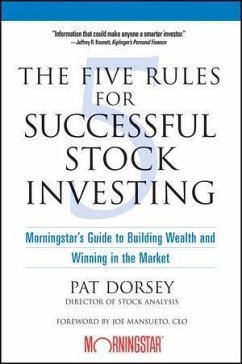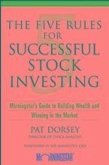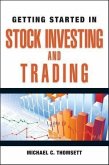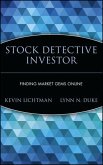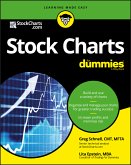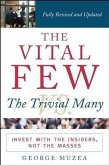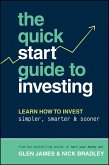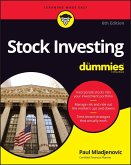Dieser Download kann aus rechtlichen Gründen nur mit Rechnungsadresse in A, B, BG, CY, CZ, D, DK, EW, E, FIN, F, GR, HR, H, IRL, I, LT, L, LR, M, NL, PL, P, R, S, SLO, SK ausgeliefert werden.
Today we'll take a look at that book. The author, Pat Dorsey, iscurrently the Director of Equity Research for Morningstar.Morningstar has historically been known for their 5-star scale ofmutual fund ratings, but several years ago began applying the samescale to individual stocks. Since Morningstar's focus is on durablecompetitive advantage, the firm's investing philosophy correlatesvery well with that of the Magic Formula and of MagicDiligence.That makes the book particularly relevant and much of my stockanalysis is based on techniques outlined in it. The Five Rules...is more or less a two part book. The first half deals covers thetitle, laying out the five rules for successful investing and thenproceeding to expand on each of them. Without spoiling too much ofthe book, Dorsey's five rules are:
1) Do your homework.
2) Find economic moats.
3) Have a margin of safety.
4) Hold for the long haul.
5) Know when to sell.
This first section then continues on to introduce the investorto the techniques of stock analysis. Topics covered includedetailed explanations of each financial statement, the points ofemphasis to look for in a good investment (such as growth potentialand financial health), how to spot accounting blowups before theyhappen, how to value a stock, and so forth. For everyone interestedin stock analysis, from 10 year pros to those just beginning to diptheir toes in the market, these chapters contain invaluable andvital information. Nearly every investor will learn something newabout evaluating companies and valuing stocks. One particularlyvaluable chapter is titled "The 10-Minute Test", which will helpyou quickly throw out stocks that are not worth your time, whilehighlighting investment opportunities that warrant additionalresearch.
The second half of the book is equally useful. In this section,Dorsey calls upon Morningstar's sector analysts to lay out theintrinsic moat qualities and the factors that separate good and badcompanies in a variety of sectors, including Health Care, ConsumerServices, Media, Banks, and so on. It's no secret to MagicDiligenceMembers that some industries are inherently better investmenthunting grounds than others, and this book explains why. Forexample, retail is generally a difficult place to invest - thereare no customer switching costs, tons of competition, andconstantly changing consumer trends. On the other hand, mostmedical device makers have very high switching costs, as surgeonsare trained on one company's products and are loathe to learn theintricacies of a competing product, unless there is a very goodreason to do so.
To close this review, a personal observation. Most investorsroutinely cite classic investing books like Ben Graham's TheIntelligent Investor as the place to start for novice investors. Irespectfully disagree. I've read many of those great classics, butno one book has explained the details of company and equityanalysis as directly or relevantly as this book. This is one of themost overlooked investing books out there, and comes highlyrecommended to all investors. -The Motley Fool

